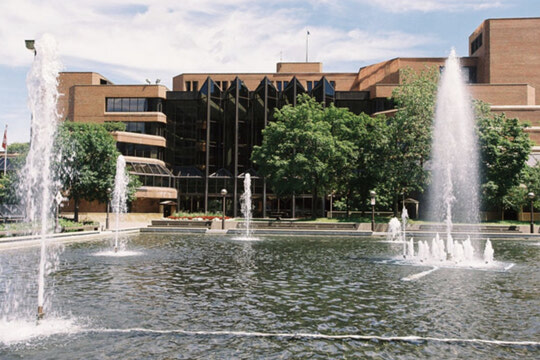A Tale of two Outaouais
Tashi Farmilo
Chelsea continues to stand out. In a report released earlier this year, the Institut de la statistique du Québec ranked the municipality among the province’s most economically robust, citing elevated income levels, strong labour force participation and sustained demographic growth.
The Indice de vitalité économique des territoires evaluates more than 1,100 municipalities, using three core indicators: median personal income for adults aged 18 and over, the employment rate among those aged 25 to 64, and the average annual population growth over a five-year period.
Chelsea, with a population of just under 9,000, performs exceptionally well across all categories. Its residents report a median personal income of approximately $79,500, significantly higher than the provincial average of $45,600. The municipality also benefits from a relatively young and expanding population, as well as proximity to employment centres in Gatineau and Ottawa. These factors have helped Chelsea emerge as one of the most economically dynamic communities in Quebec.
Gatineau itself also performs solidly. Among Quebec’s ten largest cities, it ranks fourth in the vitality index. The city posted a median personal income of $52,700, an employment rate above 80 per cent, and annual population growth of close to one per cent. As the main urban centre in the region, Gatineau supports a broad labour market that includes public administration, technology, education and health care. Its strong bilingual workforce and strategic location at the confluence of two provinces have made it a consistent destination for new residents and investment.
Yet, beyond this southern corridor, the outlook changes. Rural municipalities in Pontiac, Vallée-de-la-Gatineau and parts of Papineau face more difficult conditions. In the MRC Pontiac, the median personal income is closer to $32,500 and the employment rate among adults aged 25 to 64 is substantially lower than the provincial average. These areas have experienced slower population growth or outright decline, and residents rely more heavily on government transfers such as pensions, employment insurance and income support.
The Institute's report indicates that more than half of the municipalities in northern Outaouais fall into the two lowest quintiles of economic vitality. Contributing factors include limited public infrastructure, long travel distances to major job markets, lower levels of educational attainment and a narrower economic base. Many of these communities depend on seasonal or resource-based industries such as forestry, construction and small-scale tourism, which offer limited stability and few long-term employment prospects.
Outmigration, particularly among younger adults, continues to shape the demographic profile of the region’s northern tier. School enrolments have declined in several municipalities, and local employers report growing difficulty attracting and retaining skilled workers. The population is aging, and municipal budgets are increasingly strained by the need to maintain essential services with a shrinking tax base.
The Outaouais thus presents a case of internal contrast. Municipalities like Chelsea and Cantley are among Quebec’s top performers, while others in the same administrative region continue to face significant economic headwinds. This divergence reflects more than geography; it underscores enduring disparities in access to infrastructure, investment and opportunity.
The Indice de vitalité économique is used by the Ministry of Municipal Affairs and Housing to inform the distribution of development funding and guide regional policy. While the index does not attempt to explain causation, it offers a clear diagnostic of where economic growth is taking place and where it is not. The 2025 edition draws on data from 2022, which represents the most recent year for which complete, validated figures were available from tax filings, census updates and demographic estimates. The findings affirm Chelsea’s position at the forefront of the Outaouais and expose a deepening fault line across the region.
That divide shows no sign of narrowing on its own. Without targeted policy intervention to improve services, attract investment and retain residents in northern municipalities, the gap between the region’s most and least prosperous communities is likely to grow.





